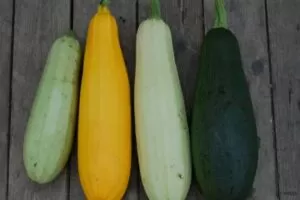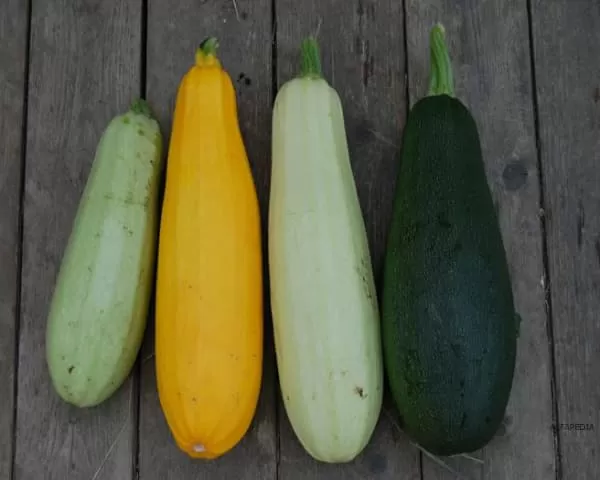Zucchini Origin and History
Although zucchini is a common summer vegetable in both the produce section of the grocery store and the backyard garden, until the early 20th century, it was barely recognized in the United States. Today, its popularity is due in large part to its prolific growth and culinary versatility; zucchini is not only a common vegetable dish, but can also be incorporated into bread and desserts.
And, of course, the long, thin squash can be transformed into “zoodles,” a nutritious alternative to traditional spaghetti squash. Zucchini, Cucurbita pepo, is a member of the cucumber and melon family and is harvested while immature, which makes the skin tender and edible.
Smaller zucchini are more flavorful and contain less water than larger varieties. Although zucchini is botanically a fruit, it is treated as a vegetable. It is derived from a similar vegetable that was common in Mexico and northern parts of South America thousands of years ago. Inhabitants of Central and South America have been eating an ancestor of zucchini for over 7,000 years, but the zucchini we know today is a variety of summer squash developed in Italy.
In fact, zucchini was formerly referred to as “Italian green squash.” Europeans who began colonization in the Americas brought the vegetable back to their homeland, where its cultivation began. The word zucchini comes from the Italian calabacin, meaning a small pumpkin. The term squash comes from the Indian skutasquash meaning “green thing that is eaten green”. Squash was one of the main foods eaten by Native Americans, along with corn and beans.
Christopher Columbus originally brought zucchini seeds to Europe and the Mediterranean region, but the vegetable was not used in its present form until the late 1800s or early 1900s; there is a published account of a “zucchini” being cooked as it is today in Milan in 1901. The French shunned zucchini for a long time until chefs learned to choose small fruits that are less soft and watery. The French term for zucchini is zucchini, which is often also used interchangeably for yellow squash.
Zucchini is believed to have been brought to the United States by Italian immigrants in the 1920s and was probably first grown in California. However, there is a record of zucchini as one of 60 vegetables grown in New York State in 1928. Today, zucchini is not only widely recognized as a green vegetable, but also as a particular favorite of home gardeners. Zucchini grows very well in most areas of the country during the summer, is easy to care for, and often produces a bountiful harvest.
Although the term summer squash can mean a variety of different squashes depending on who you are talking to, you can use the different varieties of summer squash interchangeably. Other summer squash include round squash, bullneck, pattypan, zephyr, cousa and tutama. Summer squash differs from winter squash in that the rind of the latter is hard and often inedible.
Properties of Zucchini
Zucchini contains zero fat and is rich in water and fiber. It also contains significant amounts of vitamins B6, riboflavin, folic acid, C and K, and minerals, such as potassium and manganese. Summer squash also contains antioxidant and anti-inflammatory phytonutrients. This makes squash, also known as zucchini, a nutrient-rich food that you should include in your diet.
Characteristics of Zucchini
- As the term summer squash implies, the main season for zucchini is May through August, although they are now available year-round. Summer squash has a thin, smooth skin and soft edible seeds, while winter squash has a tough skin.
- The squash is a long, cylindrical vegetable, slightly smaller at the stem end, usually dark green in color. The flesh is pale greenish white and has a delicate, almost sweet flavor. Zucchini fruit grows rapidly and is harvested 2 to 7 days after flowering. Overripe zucchini and those past their prime can be bitter, but that didn’t stop a New York gardener from growing the world’s longest zucchini: a whopping 69 and a half inches!
- Newer varieties include golden zucchini and globe or round zucchini. The golden variety is somewhat milder in flavor than the dark green. The globe variety is about the size of a softball, about 3 inches in diameter, perfect for stuffing. Zucchini should not be confused with marrow squash (also called vegetable marrow) which resembles a larger, rounder version of zucchini with white stripes.
Benefits of Zucchini
Improves digestion
Incorporating zucchini into your diet can help improve digestion, including reducing the incidence of constipation and other digestive problems. Zucchini is rich in water. It also contains significant amounts of fiber, electrolytes and other nutrients that are necessary for a healthy digestive system. Regular consumption of zucchini can also help prevent ulcers, IBS and colon cancer.
Delays aging
Aging results from the activity of toxins, free radicals and inflammation that the body is exposed to over the years. These poisons and inflammation can be reduced with antioxidants and anti-inflammatory foods. Zucchini is rich in antioxidants and anti-inflammatory phytonutrients, which help the body eliminate free radicals and excess inflammation.
Lowers blood sugar levels
High blood sugar levels and diabetes are problems made worse by a diet high in (unhealthy) carbohydrates and low in fiber. By including zucchini in your diet, you increase your fiber intake. You can also reduce your carbohydrate intake because you will feel fuller longer. These dietary changes can help lower your blood sugar levels and increase insulin sensitivity.
This may mean that your body no longer requires excessive amounts of insulin to process sugar. This can change your risk of developing diabetes. Studies show that including at least 30 grams of fiber in your daily diet significantly reduces the risk of developing diabetes.
Supports healthy circulation and a healthy heart
Zucchini is low in fat and sodium, but high in fiber and potassium. These properties help maintain healthy blood circulation. Low levels of sodium and potassium help maintain healthy blood pressure, while fiber, such as the polysaccharide in zucchini, lowers cholesterol levels. This combination works synergistically to maintain good circulation, which is necessary for healthy blood pressure and a healthy heart.
Improves eye health
Zucchini is a good source of health-protective antioxidants and phytonutrients, including vitamin C, beta-carotene, manganese, zeaxanthin and lutein. Zeaxanthin and lutein are especially helpful in maintaining and improving eye health by fighting free radicals. This reduces the risk of developing age-related eye conditions such as glaucoma, cataracts and macular degeneration. You can also use zucchini to treat puffy eyes by placing raw zucchini slices over the eyes. Leave the slices in place for about 30 minutes and repeat several times in a day.
Increases energy
Because zucchini is a rich source of B vitamins, especially folate, riboflavin and B6, it can help increase energy production in the body. This reduces fatigue and improves mood. The body requires B vitamins for protein and carbohydrate metabolism. These vitamins also help in various brain functions, including cognition.
Weight loss
Because zucchini is low in calories and high in water and fiber, it is an excellent food for those who wish to reduce their body weight. It is worth noting that excess body weight usually results from regular consumption of carbohydrates and sugary foods. By including zucchini in your diet, you increase the fiber and water content of your food. This means you will feel fuller for longer and end up eating less. In the long run, you will lose some of your excess weight.
Improves thyroid and adrenal functions.
Zucchini contains high amounts of vitamin C and polyphenols, especially in the peels. Laboratory studies on rats at Devi University found that compounds in zucchini peels have positive effects on the thyroid and adrenal glands. In addition, the compounds helped regulate insulin levels.
Protects against oxidation and inflammation.
Zucchini is rich in antioxidants and anti-inflammatory compounds, which include vitamins A and C, glutathione peroxidase and superoxide dismutase. Large amounts of these compounds are found in zucchini skin. For this reason, you should eat the skin along with the flesh. Eating zucchini regularly reduces oxidation and inflammation within the body. This boosts your immunity and protects against diseases associated with inflammation. All of these zucchini benefits are impressive, so try adding more to your meals and, if you can, try growing your own.
Nutritional Value of Zucchini
Zucchini has many valuable minerals such as calcium, iron, magnesium, phosphorus and lots of potassium. They also offer many vitamins including vitamin A, vitamin C, vitamin K and folic acid. As an added benefit, zucchini also contains antioxidants.
Scientific Name of Zucchini
Cucurbita pepo
English: Gourd, Marrow, Noodle squash, Pumpkin, Spaghetti marrow, Spaghetti squash, Squash, Vegetable spaghetti.
In German: Courgette, Patisson, Spaghettipompoen
Spanish: Calabacín, Calabaza, French, Citrouille, Courge, Courgette
Italian: Zucchina, Zucchino
Calories in Zucchini
One large zucchini (approximately 323 grams) contains 55 calories, 3.9 g of protein, 1.0 g of fat, 10.1 g of carbohydrates, 3.2 g of fiber, and 8.1 g of sugar.
Yellow Zucchini
Not to be confused with yellow squash, yellow squash, sometimes called golden squash, does not taper at the neck like summer squash. It is similar in shape to the classic green squash, although its flavor is a bit sweeter. Use it in sweet or savory recipes, raw or cooked, just as you would green zucchini. Or better yet, mix the two together.
Recipes with Zucchini
A creamy, hearty pasta dish that you can prepare in just 20 minutes – even the pasta cooks in the crockpot!
Mushroom and Zucchini Pasta in a Crock Pot
Ingredients
- 1 pound spaghetti squash
- 1 pound cremini mushrooms, thinly sliced
- 2 zucchini, thinly sliced and quartered
- 2/3 cup peas
- 2 cloves garlic, thinly sliced
- 2 sprigs thyme
- Kosher salt and freshly ground black pepper, to taste
- 1/3 cup grated Parmesan cheese
- 1/4 cup heavy cream
Directions
- In a large pot or Dutch oven over medium-high heat, combine spaghetti squash, mushrooms, zucchini, peas, garlic, thyme and 4 1/2 cups water; season with salt and pepper to taste.
- Bring to a boil; reduce heat and simmer, uncovered, until pasta is cooked through and liquid has reduced, about 8-10 minutes. Stir in Parmesan and heavy cream.
- Serve immediately.
Zucchini Pizza Bites
Ingredients:
- 1 tablespoon olive oil
- 3 zucchini, cut into 1/4 inch thick slices
- Kosher salt and freshly ground black pepper, to taste
- 1/3 cup marinara sauce
- 1/2 cup finely shredded mozzarella cheese
- 1/4 cup pepperoni minis
- 1 tablespoon Italian seasoning
Directions:
- Preheat oven to broil.
- Heat olive oil in a large skillet over medium-high heat. Working in batches, add zucchini and cook, turning once, until golden brown, about 1-2 minutes per side; season with salt and pepper to taste.
- Place zucchini rounds on a large baking sheet. Top each zucchini round with marinara, mozzarella and pepperoni minis.
- Place in oven and bake until cheese is melted, about 1-2 minutes.
- Serve immediately, sprinkled with Italian seasoning, if desired.
- Salmon and Zucchini with Lemon and Herbs
Ingredients
- 4 zucchini, chopped
- 2 tablespoons olive oil
- Kosher salt and freshly ground black pepper, to taste
For the salmon
- 2 tablespoons brown sugar, packaged
- 2 tablespoons freshly squeezed lemon juice
- 1 tablespoon Dijon mustard
- 2 cloves garlic, minced
- 1/2 teaspoon dried dill
- 1/2 teaspoon dried oregano
- 1/4 teaspoon dried thyme
- 1/4 teaspoon dried rosemary
- Kosher salt and freshly ground black pepper, to taste
- 4 salmon fillets (5 ounces)
- 2 tablespoons chopped fresh parsley leaves.
Directions:
- Preheat oven to 400 degrees F. Lightly grease a baking sheet or coat with nonstick spray.
- In a small bowl, mix together the brown sugar, lemon juice, Dijon, garlic, dill, oregano, thyme, and rosemary; season with salt and pepper to taste. Set aside.
- Arrange zucchini in a single layer on the prepared baking sheet. Drizzle with olive oil and season with salt and pepper, to taste. Add the salmon in a single layer and brush each salmon fillet with the herb mixture.
- Place in the oven and cook until the fish flakes easily with a fork, about 16-18 minutes. *
- Serve immediately, garnished with parsley, if desired.
How to prepare zucchini ?
- Wash the zucchini, then cut off the top stump and the very base of the zucchini.
- Leave the zucchini skin on: it contains extra fiber and nutrients, plus it is tender and soft, so there is no need to remove it.
- Zucchini can be sliced any way you like. Larger, thicker slices are great for grilling or steaming. Rounds or half moons work well for sautéing. And julienne cuts are suitable for grilling.
- Zucchini lends itself well to many types of cooking, although overcooking can cause it to become mushy. To help prevent mushrooming and maintain a meatier texture, sprinkle a halved zucchini generously with salt before cooking.
- Pearls of moisture will appear on the top. After about 5 minutes, wipe off all salt and moisture. This helps remove excess water from the zucchini.
- If you have a spiral vegetable slicer, try using it on zucchini to create thin, curly ribbons. Steam or boil the ribbons quickly (about 1 minute), then use them as a base for pasta sauce or other ingredients. Or enjoy the ribbons raw in a salad.
- Zucchini also makes a great addition to baked goods, such as muffins, cookies, quick breads and cakes. (Tip: if you have large zucchini, baking is the best place to use them).
- In case you get your hands on some zucchini blossoms, enjoy them! Try stuffing them with some goat cheese, dipping them in a light batter (optional) and frying until crispy in coconut or olive oil.
There are many interesting ways to enjoy zucchini.
Salads: you can dice the squash fruit and add it to your salad bowls for a refreshing boost.
Sandwiches: Slice up some zucchini and add it to your favorite sandwiches for an amazing crunch.
Sautéed Zucchini: Cut zucchini into cubes and sauté with olive oil or butter. Add some minced garlic, salt and pepper for a rich flavor.
Baked zucchini: place a single layer of sliced zucchini in a baking dish and sprinkle cheese on top. Now turn on the oven to 350 ° and bake for about 40 minutes until the zucchini has a golden brown color.
As you know, it is important to eat enough fruits and vegetables, so if you include this fruit in your diet, you will keep your body healthy and well hydrated in the long run. It is undoubtedly one of the healthiest food choices that are easy to consume in delicious ways.
Zucchini in batter
Ingredients
- 1 large zucchini
- 2 large eggs, beaten
- 1/2 cup seasoned Italian bread crumbs
- 1/2 cup Panko seasoned bread crumbs
- 1/4 cup Parmesan cheese, grated (shred your own!)
- salt, to taste (I like salty food, so I use 1/2 teaspoon).
Directions
- Preheat your oven to 400 degrees F.
- Wash and cut the zucchini into slices about 1/4 “thick.
- Combine the Italian seasoned bread crumbs, Panko bread crumbs, Parmesan cheese and salt, and set aside.
- Dip the zucchini slices in the egg wash and then in the bread crumb mixture.
- Place the zucchini in a single layer on a baking sheet and bake for 10 minutes.
- Flip zucchini and bake for an additional 10 minutes.
- Remove from oven.
- Serve.
Fried Zucchini
Other than a little time, this recipe doesn’t take much. The steps are simple, as are the ingredients.
SLICING. To make zucchini, start by slicing it (no need to peel the zucchini). Prepare a bowl of milk and two Ziploc bags, one filled with flour and one filled with breadcrumbs or Panko.
DOUGH. Place some of the zucchini slices in the milk, making sure all sides get wet. Add this to the bag of flour, shake and then add back to the bowl of milk. Add this to the bag of bread crumbs and shake.
FRIED. Heat oil in a skillet over medium heat. Add slices and fry until golden brown. Serve with Ranch or marinara.
How to Air Fry Zucchini ?
A great healthy alternative to the traditional frying pan is to use a deep fryer. Heat the fryer to 390°F. Prepare your zucchini according to the recipe instructions. Place a single layer of zucchini rounds or strawberries in the fryer. Cook for 5-7 minutes until crispy.
Additional Tips:
How to Reheat Zucchini ?
- Fried zucchini is ideal when eaten right away, but if you have leftovers, the best way to reheat them is in the oven. You can either broil them over low heat for 2-4 minutes or place them in a preheated oven at 375°F for 5-7 minutes until heated through.
- How can I add flavor to fried zucchini? If you want to add some variation, try adding Parmesan cheese, chili flakes, garlic salt or cayenne pepper before frying.
- Another way to change up the flavors is to use different dipping sauces. We love dipping them in homemade ranch dressing, but you can also try some of your favorite dipping sauces, such as marinara sauce or horseradish sauce.
Grilled Zucchini
Zucchini is one of our favorite summer grilling vegetables. It’s healthy, it’s easy and it cooks so fast. below for the perfect grilled zucchini every time.
Ingredients
2 medium zucchinis, cut into thick strips
1 tbsp. extra virgin olive oil
1/2 tsp. grated lemon
1/4 tsp. crushed red bell pepper flakes, plus more for garnish
Kosher salt
Freshly ground black pepper
4 basil leaves, torn into medium pieces
Directions
Preheat grill to medium-high heat. In a large bowl, toss zucchini with oil, lemon zest and red bell pepper flakes. Season with salt and pepper.
Once the grill is hot, carefully use tongs to rub an oiled paper towel over the grates.
Using tongs, place the zucchini on the grill. Cover and cook, 3 minutes. Turn and continue cooking on high, covered, 2 to 3 minutes more.
When zucchini is tender, remove from heat and garnish with basil and more red bell pepper flakes.
Stuffed Zucchini
- This recipe starts with zucchini, which is hollowed out, seasoned and then placed in an ovenproof dish. A simple meat sauce is made with Italian sausage, marinara sauce, garlic and onion.
- The sauce is piled on the zucchini shells, then the whole thing is topped with cheese and baked until sticky and golden brown.
- Hollowed out zucchini halves in a baking dish.
Tips for stuffed Zucchini boats:
- You can use mild or spicy Italian sausage, pork or turkey sausage, or even ground beef for this recipe.
- Use your favorite brand of marinara sauce.
- You can also make this recipe with yellow squash, or even hollowed out eggplant!
- While I usually use mozzarella cheese in this dish, other great choices would be parmesan, fontina or provolone.
- Sausage and tomato sauce in a skillet.
Stuffed Zucchini Boat Variations
This is an Italian-style stuffed zucchini, but there are many other great ways to fill your squash!
Mexican: Make a stuffing with 1 pound ground beef, 16 ounces tomato sauce, 4 ounces diced green chiles, 3/4 cup black beans and 1/2 cup corn, then top with cheddar cheese and bake.
Asian: Make my chicken lettuce stuffing, toss with zucchini and bake.
Vegetarian: Make a filling with sautéed onion, 2 cups cooked grains such as rice or quinoa, 1 diced red bell pepper, salt, pepper, 1 1/2 cups shredded cheese and fresh herbs.
How to Make Creamy Zucchini Soup ?
Creamy Zucchini Soup
You don’t need a lot of cream or even a roux to make a creamy zucchini soup. The natural texture of the zucchini flesh transforms beautifully into a silky, creamy texture. It is worth the extra minutes to sauté the onions until golden brown for the extra flavor it adds. Topping the soup with a sprinkling of Parmesan is a great finishing touch, otherwise try croutons, thinly sliced basil or another herb.
Ingredients
- 1 tablespoon olive oil or butter
- 2 cloves garlic, minced
- 1 large onion, chopped (brown, yellow or white)
- 1 kg / 2 lb of zucchini, cut into 1.5 cm / 3/5 ” slices, larger in half (Note 1)
- 3 cups / 750 ml of vegetable or chicken stock, preferably reduced in salt
- 1 cup / 250 ml water
- 3/4 cup / 185 ml cream, thick / heavy (or light or add a good amount of butter instead) (Note 2)
- 1 cup / 250 ml milk, any percentage of fat or more cream.
Garnish:
- Cream, for swirls
- Finely grated Parmesan
Instructions
- Heat the oil in a large pot over medium high heat. Add garlic and onion, and cook for 3 to 4 minutes until golden brown.
- Add zucchini, broth and water. Bring to a boil, then cover and reduce heat to medium. Optional: Skim brown foam (scum) from the surface occasionally.
- Cook for 15-20 minutes or until zucchini is very soft.
- Use a blender to blend until smooth. (Note 1 for blender)
- Stir in cream and milk. Add salt and pepper to taste.
- Serve in bowls, swirl over a touch of cream if desired, a sprinkling of grated Parmesan and more pepper. Serve warm or at room temperature.
Recipe Notes:
- Known as Courguettes in the UK and some parts of Europe. You will need about 6 medium (about 20 cm / 8″ long, 4 cm / 1.5″ wide) or 8 small, or 4-5 large.
- The cream adds a touch of richness to an otherwise very healthy soup. If you prefer, you can use a low-fat cream, crème de crème or mascarpone, or even a good amount of butter!
- Blender: To use a blender, you must cool a bit before whizzing, otherwise the heat will expand, the lid will go off and you’ll get soup all over the place.
How to Make Zucchini Spaghetti ?
- Learn how to make healthy zucchini noodles with this easy 15-minute recipe! A step-by-step guide on the process of spiralizing and cooking zoodles to create a tasty gluten-free pasta.
- Zucchini is an incredibly versatile ingredient with its tender flesh and neutral, subtly sweet flavor. Not only does it taste good, but the nutritional benefits of zucchini are also impressive.
- There is no need to peel zucchini before cooking, as the dark green skin is very thin and helps it hold its shape.
The right way to select zucchini:
- Make sure the flesh is firm and the surface is free of significant defects, such as large nicks.
- Select large zucchini for maximum yield, but not too much flesh.
- Zucchini has a high moisture content, so oversized zucchini has a lot of flesh and may become more moist after cooking when not connected to the skin. This is more of a problem with homegrown zucchini.
- Don’t limit yourself, yellow summer squash and Mexican squash work well too!
- Person making zucchini noodles using a Spiralizer.
Different ways to create zucchini noodles:
- Chef’s knife: use a sharp chef’s knife to cut long, thin strips of zucchini noodles. Approximately 1/4 inch wide or less is recommended.
- Vegetable peeler: run a vegetable peeler along the length of the zucchini to create thin ribbons – a Y-peeler works great!
- Julienne peeler: particular julienne peelers that have smaller teeth to create thin strips of vegetables, about 1/8 inch thick, and work well for zucchini noodles.
- Handheld spiralizer: cut off both ends of the zucchini and use a twisting motion to create zucchini noodles, like a large pencil sharpener.
- Countertop spiralizer: these handy larger units offer more noodle size and shape options. Cut off both ends, place in the spiralizer, select the type of cut and turn the crank.
- It’s easy to learn how to use a spiralizer, for quick and curly noodles!
- Not only do I use these methods for zucchini, but they’re great for sweet potato noodles too! Now that the noodles are ready, it’s time to cook!
How to Cook Zucchini Noodles ?
When zucchini is cut into thin strips, it makes cooking the vegetable very fast! However, the cooking time will increase slightly if you use longer pieces or larger shapes, especially in the spiralizer. To infuse more flavor into the recipe, garlic is cooked briefly in olive oil to enhance aromatics and flavor. All it takes is 30 seconds in the pan, and you can instantly smell the wonderful savory aromas.
The zoodles are added to the skillet and cooked over medium heat, and sautéed until tender. Like the pasta, the zucchini noodles should be al dente. Take a bite to check for doneness. You can the simple recipe, lightly season with salt and pepper and garnish with freshly grated Parmesan cheese and chopped parsley. However, you can add ripe tomatoes, chicken, shrimp, plant-based proteins or mix with pesto sauce for variety.
How to Make Pureed Zucchini ?
This quick microwave recipe for pureed zucchini is the ideal baby food to introduce solids to your baby.
Ingredients
- 50 g zucchini (about 1/3 of a zucchini)
- 1 teaspoon of water
Method
- Remove zucchini skin and cut into 1.5 cm slices (3-4 slices). Place in a microwave-safe dish covered with a splash of water. Cover.
- Microwave on high for 90 seconds (time may vary). Leave covered for 2-5 minutes. Center should look soft and slightly sunken.
- Puree with a blender or mixer.
Tips
- Some seeds may escape the blending process. If your baby cannot handle slight lumps, pass the puree through a sieve.
- Add water to thin the puree. To make it thicker, try mixing in some baby cereal.
- This quick one-meal recipe is a great way to use up some leftover vegetables from your own meal. Make sure the puree has cooled before feeding your baby.
How to Make Zucchini Omelet ?
Ingredients
- 2 cups grated and packed zucchini, about 2 small zucchinis
- 2 teaspoons salt
- 1/3 cup flour
- 1 egg
Instructions
- Preheat oven to 375 degrees F and line a large baking sheet with parchment paper or a silicone mat.
- Shred zucchini using the shredding attachment of a food processor or a box grater (using the finer shredding option). Place in a large bowl.
- Sprinkle zucchini with 2 teaspoons of salt, stir well and let stand for 10-20 minutes. This extracts a large amount of water from the zucchini so the rind does not get soggy.
- Place the zucchini in a tea towel or cheese cloth and squeeze out as much moisture as possible. When you think you’ve gotten it all out, give it a little more.
- Remove the moisture, place the zucchini in a medium bowl and mix the flour and egg well.
- Take about 1/8 cup of the mixture and roll it out into a very thin circle. You want it to be as thin as possible, with no holes.
- Bake for 9-11 minutes or until the tortillas begin to brown around the edges and the center is cooked through. Once out of the oven, let cool to room temperature. This helps them firm up a bit and makes them easier to peel off the parchment paper/mat.
- Enjoy!
Zucchini Plant
Zucchini grows best during the warmer months, which is why it is also called summer squash. However, you can still grow it at other times as long as it is protected from extreme cold. If you lower your system, zucchini plants can be extremely productive with fruit. If you want to grow zucchini in your garden, here’s what to do:
Prepare the growing area by digging to loosen the soil. Add organic fertilizer and mix it well into the soil. Create mounds about 2 feet in diameter, up to 10 inches high and about four feet apart. Plant six seeds per mound, spacing them evenly. Cover each seed with soil no deeper than one inch and water well.
Thereafter, water the zucchini seeds once or twice a week, depending on the weather. Once the seedlings emerge, wait until the healthiest ones are about three inches tall. Remove the weaker ones, leaving two or three in each mound. Continue watering as needed, aiming to get water close to the roots.
When the zucchini begins to flower, you may need to add fertilizer to support fruit growth. Also water more frequently, especially if it is hot. Zucchini takes about 60 days from planting to harvest. Harvest zucchini as needed when they are about six inches long. The fruits taste best at this stage. If you let them grow too long, they will start to get woody and won’t taste too good. Enjoy your homegrown zucchini raw or cooked.
Topics Related to Vegetables in ALPHAPEDIA
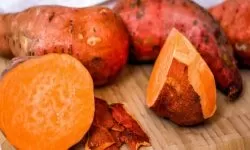
SWEET POTATO: Properties, Benefits, Origin and History
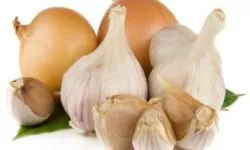
GARLIC: Properties, Benefits and Contraindications
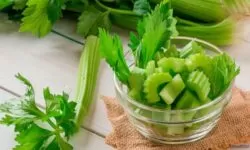
CELERY: Properties, Benefits and Contraindications
Health and Wellness Issues at ALPHAPEDIA

SWEET POTATO: Properties, Benefits, Origin and History

WINTER FRUITS: Benefits and Properties
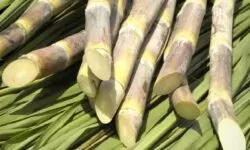
SUGAR CANE: Properties, Benefits and Risks

💚 THE GRAPE: Properties, Origin and Benefits
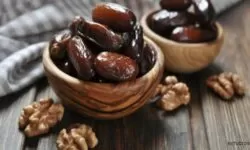
DATES: Benefits, Properties and Contraindications

BLUEBERRIES: Benefits, Properties and Contraindications
Other Topics of Interest in ALPHAPEDIA

FREE DOCTORATE IN PSYCHOLOGY

FREE CERTIFICATE PROGRAM IN ENVIRONMENT

FREE CERTIFICATE PROGRAM IN PHOTOGRAPHY

FREE PIANO COURSE

FREE BACHELOR DEGREE IN RELIGIOUS STUDIES

💚 WHAT IS ENGINEERING
Zucchini Image, Photo or Drawing
